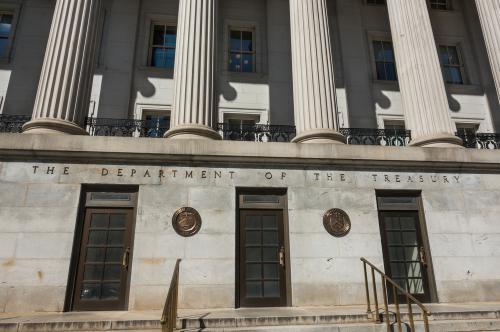Unemployment compensation has long been the nation’s front-line program for providing timely aid to jobless workers and injecting countercyclical stimulus into a declining economy. It will play the same crucial role in the current coronavirus emergency. In the present crisis, however, it is not only necessary to insure workers against the risk of earnings loss, it is also important to encourage unemployed workers to maintain a safe social distance from others. We want to reduce the risk of disease transmission and slow the rate of infection. In the relief and stimulus package they just passed, Members of Congress hoped to help accomplish this by giving laid off workers exceptionally generous unemployment compensation, reducing the need for laid-off workers to immediately find another job.
In my essay, I briefly show how unemployment insurance (UI) has worked in recent recessions, including the worst previous postwar downturn, the Great Recession. Then I describe some of the key UI provisions in the stimulus package just passed by Congress. Finally, I remark on the implementation challenges UI administrators will face in the next few months.
A crucial component of the relief package is a massive federally funded increase in weekly UI benefits. The benefit hike is equal to an additional $600 per week for every UI recipient. The new law increases weekly UI benefits by 20 times as much as was done in the 2009 stimulus package. Another comparison may be useful. In January 2020, the nationwide average UI weekly benefit was $385. Adding $600 to this amount yields an average weekly benefit of $985, an increase of about 155% compared with the benefit available in January of this year. Over the past two decades, a typical UI recipient had 41% of past earnings replaced by a UI check. When the benefit hike in the new law goes into effect, the typical UI replacement rate might rise to about 105%. This means many unemployed workers, especially those who earn below-average wages, will receive weekly benefits that are greater than the weekly earnings they lost.
This is indeed a big bazooka in terms of countercyclical stimulus. It should allow jobless workers to keep up their spending for as long as the benefit hike remains in effect. In addition, for eligible workers it will reduce the urgency of finding another job, aiding efforts to reduce person-to-person contacts and slow the transmission of the coronavirus. The benefit hike is slated to remain in effect for four months, though Congress could authorize an extension of the provision if the economic situation requires additional stimulus.
The Brookings Institution is committed to quality, independence, and impact.
We are supported by a diverse array of funders. In line with our values and policies, each Brookings publication represents the sole views of its author(s).






